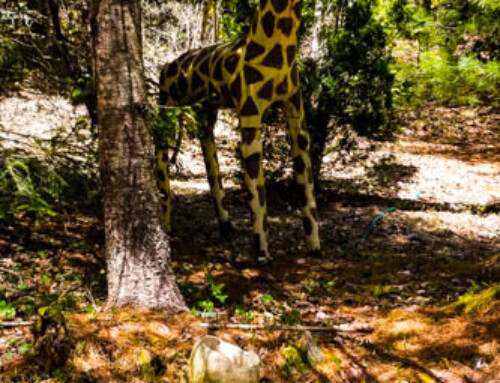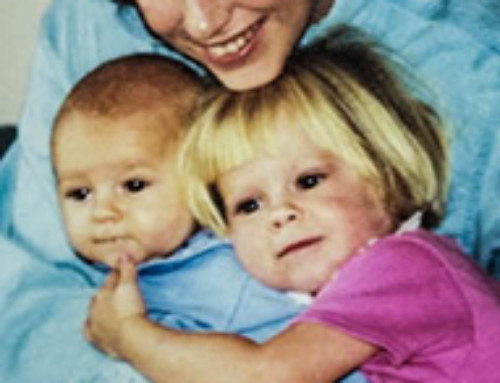Myers-Briggs Type:
Sensing and Intuition
(This post is the fourth in the series: Right, Left and Center. I invite you to review the first three in order to put this one into context.)
We have been considering personality differences through the lens of Myers-Briggs Personality Type. It is my fervent hope that by developing respectful understanding of how we all tick so differently, we will then be able to listen with more civility to our friends, foes, and family members as we continue to debate the future leadership of our country.
Myers-Briggs theory states that one person “ticks” while the other “tocks” due to basic differences in our wiring. Joe Friday wants, “Just the facts, M’am”; Einstein contends that imagination is more powerful than fact. Friday’s mind is more naturally drawn to things that can be directly observed through the five senses. He is concerned with practical verifiable reality. Einstein, on the other hand, prefers abstracting theories and possibilities from the facts at hand.
Joe Friday prefers tires you can kick; Einstein theories you can craft. Friday figures out what is; Einstein what might become. Friday prefers a process called sensing; Einstein prefers intuition. Can you imagine a conversation between the two?
What constitutes these variances? Read on:
PERCEPTIVE FUNCTIONS
When our brains are active, they are doing one of two things, taking in information or processing that information. When we take in information, we are perceiving or becoming aware of things, people, events, or ideas. We prefer to do so in one of two ways, sensing or intuition. People who are drawn to concrete data known through the five senses prefer sensing. Those who dream the possibilities, recognize patterns and abstract realities prefer intuition.
It has been my experience that this difference creates more problems in communication than any of the other dichotomies in Myers-Briggs type. Why? Because we first take in information before we process it. Having different starting points sets us up for confusion from the very beginning.
The sensing Joe Fridays of the world trust and get satisfaction from the concrete facts of existence, both past and present. They trust things they can touch, see, taste or hear. They are, therefore, very observant of the immediate environment and will be able to readily describe the physical details of a particular situation. My sensing husband hears the howling wind in the night. I sleep through it, factoring the sound into the imagery of my dreams. He reads road maps easily, has a sense of direction and ascertains rather than estimates time of arrival in travel. He patiently and methodically details the finances of our domestic life. Guess who prepares the tax returns at our house!
The sensing thought process is thoughtful and deliberate. Opinions are backed up by facts, preferably ones that have been proven reliable by the test of time. Learning is primarily achieved through familiarization and memorization. In fact, sensors often have quite good memories. Knowing that memory is enhanced by the quality of attention we pay to information, it makes sense that the sensor’s ability to focus in on the object or data would enhance their ability to recall it.
The language of a sensor is factual. Sentences are sparse and realistic. Words carry less conviction than does experience. Opinions will be backed up by verifiable example. Information will be explicitly stated without inference or innuendo. What they see is what you will get.
Because of these habits of mind, sensors tend to be reliable, stable and efficient. They occupy themselves with practical pursuits and are drawn to disciplines such as history, accounting, biology, botany, geography, finance and the likes.
Intuitives are the mirror opposite of sensors. Being rather uninterested in the detailed sensory report of things as they are, intuitives are drawn to the big picture and easily see connections between ideas, thoughts and events. They are alert to inspirations arising from the unconscious in the form of metaphor, insight and symbol . Visionaries, they along with Blake, can “see eternity in a grain of sand”.
While the sensor is preoccupied with the present and the past, intuitives are fascinated by the future. The stability of the tried and true is less appealing than the possibilities of the new and not yet known. They are, therefore, innovative thinkers and pioneers.
Intuitives are drawn to complexity and are gifted at expressing complex thought in written or spoken words. Their language is nuanced, metaphoric , complex and most important to them. In fact, they trust words more than experience and relish in providing the narrative to life’s mysteries.
Intuitives thrive in areas such as literature, religion, psychology, physics and policy design.
Their future orientation often leaves them less in touch with immediate surroundings as their minds are busy building castles in the sky. This yields them less facile with the road map, but wonderfully able to make meaning of the trip and provide colorful commentary of the observed patterns in relationship and experience. You have to watch them, though. They are likely to be planning the next trip while the sensor is invested in enjoying the current one!
Because the intuitive receives much information from the unconscious, their mental process is less detectable. They often move from A to Z in lighting time, leaving their sensing friends to distrust the products of their intuitive minds since the activity of it was not observable. Myers likens their process to a “ski jump-a soaring take off from the known and established, ending in a swooping arrival at an advanced point, with the intervening steps apparently left out. Those steps are not really left out, of course; they are performed in and by the unconscious, often with extraordinary speed.”
This process is the breath of life to the intuitive, who abhors routine; but it renders them questionable to their sensing counterparts who adore it.
In her book Gifts Differing, Isabel Myers offers the following chart detailing the gifts of each preference:
Sensing Types:
Face life observantly
Are observant at the expense of imagination
Prefer the art of living in the present
Dislike any occupation that suppresses sensing
Intuitive Types:
Face life expectantly
Are imaginative at the expense of observation
Pay less attention to the present
Dislike any occupation that requires concentration on sensing
Given the vast differences in these two types, we might readily agree with Isabel Myers who says, “When good will is in short supply, the conflict of the opposites can be serious.” Having devoted her life to promoting harmony and understanding among differing types, Myers is the first to recognize that, as prescient creatures, we are able to choose attitudes of curiosity and tolerance. We are able, not only to look beyond our differences, but to use them constructively in our endeavors and relationships. Towards that end she offers this chart:
Sensing Types Need Intuitives:
To bring up new possibilities
To supply ingenuity on problems
To read the signs of coming change
To see how to prepare for the future
To have enthusiasm
To watch for new essentials
To tackle difficulties with zest
To show that the joys of the future are worthy
Intuitives Need Sensing Types:
To bring up pertinent facts
To apply experience to problems
To read the fine print in a contract
To notice what needs attention now
To have patience
To keep track of essential details
To face difficulties with realism
To remind that the joys of the present are important
Our type differences could easily cause us to agree with Paul Newman in Cool Hand Luke when he says, “What we have here is a failure to communicate.” Yet, we also have the more desirable option of concurring with Dr. Charles Seashore who says, “The differences that block us can be translated into differences that empower us.” (Type Talk) May we choose the latter.
Since a picture is worth a thousand words, I invite you to spend a delightful 15 minutes watching this hilarious, poignant you-tube video, “Wehrli tidies up art”. My intuitive brain sees it as an apt presentation of the sensing/intuitive differences. Enjoy!



